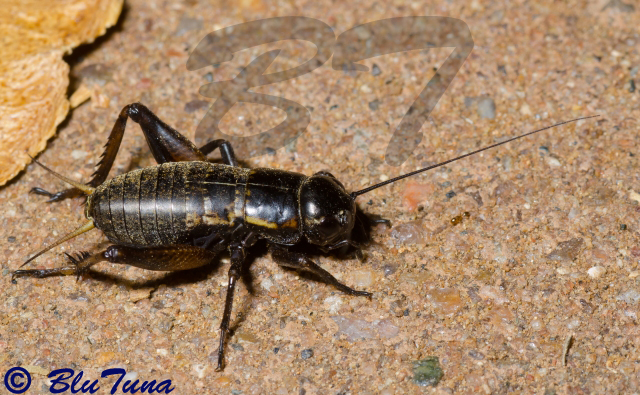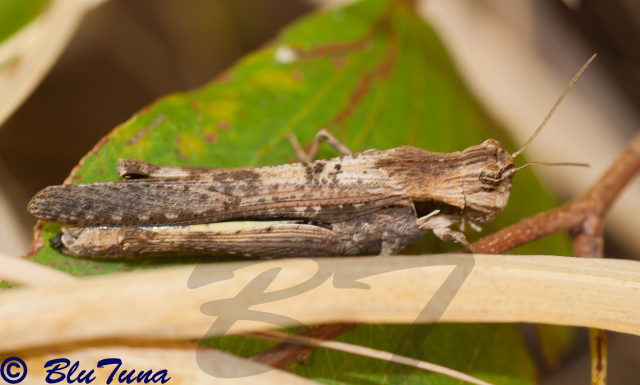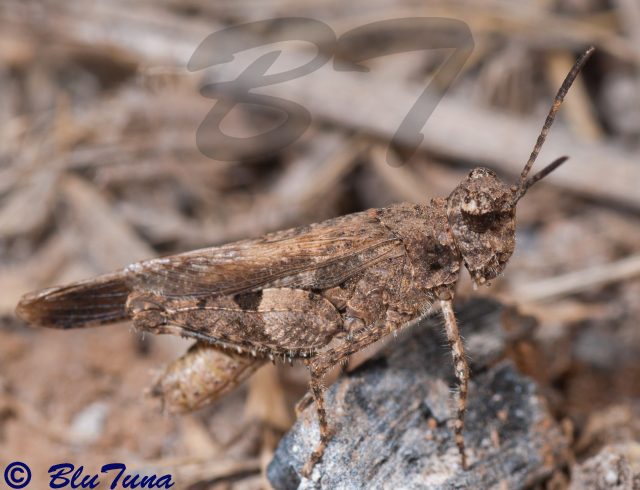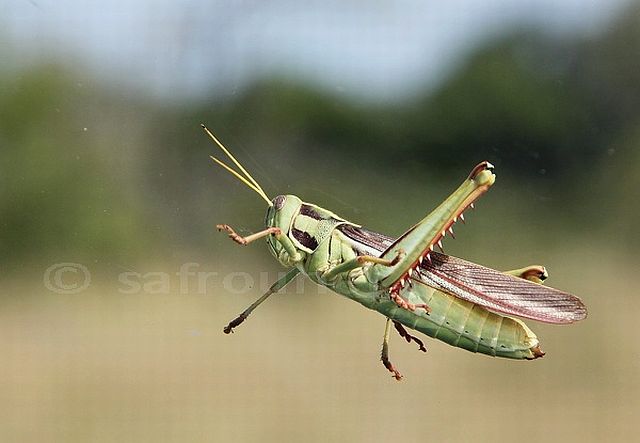Suborder Ensifera. Family Gryllidae. Subfamily Gryllinae. Tribe Gryllini
 © BluTuna
© BluTunaKruger National Park, Letaba (May 2014)
A large stocky dark brown Gryllid, 23 mm in length, with very robust hind femurs, tibiae armed with spines. Lighter areas on the pronotum.
The genus Acanthogryllus remains monotypic and may be best characterized as a Gryllus which has become a deep burrowing species.
Distribution
Acanthogryllus fortipes is widespread in South Africa and occurs north to Zimbabwe and Mozambique.
Acanthogryllus fortipes appears to be strictly associated with large expanses of lawn and is fairly common in many of the camps in the Kruger National Park and elswhere abundant in mowed lawns such as cricket grounds.
Biology
Nymphs and adults dig deep burrows where they hide during the day. At night they emerge to feed on grasses and other organic matter.
Adults of are especially common in the spring and early summer. The dry season is probably passed either in the late nymphal or adult stage and mating and egg-laying takes place shortly after the rains have begun.
Males sing from entrances of their burrows. The song consists of a succession of four to seven pulse chirps. Neighboring males chirp in alternation such that an individual calls during the silent period in a neighbour's song.
Identification
Large dark brown cricket with pale orange-brown band across vertex of head. Foretibiae with one long apical spur (longer than basal tarsomere). Head blackish from vertex onto forehead; face blackish on forehead, orange brown on mouthparts; cheeks orange.
Pronotum: dorsum pattemed with pale orange brown and dark brown. Lateral lobes black in upper half, pale in lower half.
Forewings brown, dorsum pale along medial vein, never extending to end of abdomen. Hindwings usually extending slightly beyond forewings, sometimes hidden, rarely extending beyond end of abdomen.
Legs pale brown to reddish brown, often spotted and streaked with darker brown. Foretibiae with large outer and much smaller inner tympanum. Basal tarsomere less than one third length of foretibia. Hind femur orange brown with dark brown oblique stripes on outer face. Hind tibiae dark brown with especially long and conspicuous subapical spurs.
Females: Forewings covering at least two thirds of abdomen. Ovipositor slightly shorter than hind femora: 7.5-12 mm.
Links:
http://orthoptera.speciesfile.org/Commo ... ID=1122560
https://www.biodiversitylibrary.org/ite ... 3/mode/1up
https://www.jstor.org/stable/4064821?ca ... VpcNW42oVW
https://www.jstor.org/stable/pdf/406482 ... b0abb8197e
https://journals.co.za/content/ento/3/1/AJA10213589_107



 © BluTuna
© BluTuna © BluTuna
© BluTuna
